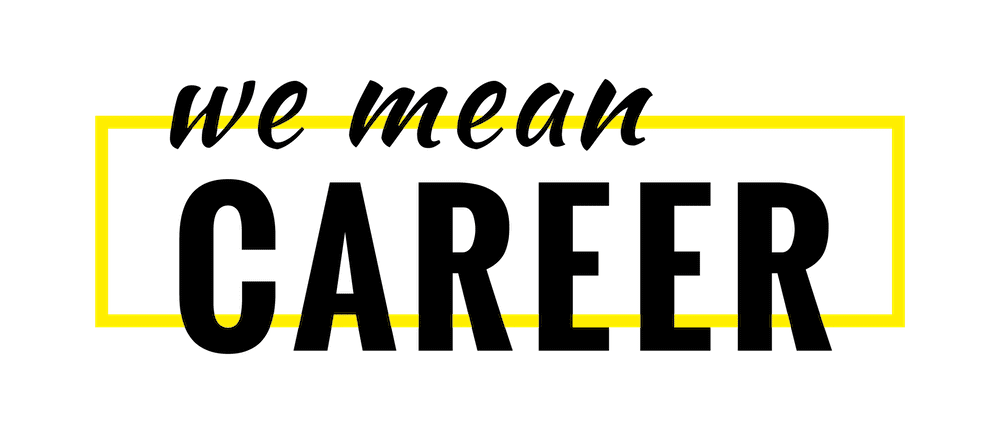HOW TO SOLVE PROBLEMS AT WORK
Effective problem-solving in the workplace starts with an open mind and willingness to be flexible and adaptable. Problem-solving occurs within business daily. It is very important to develop a process that allows you and your team to practically and efficiently work through problems. The better your problem-solving process, the less stress is added to the workplace environment. This process will vary company to company, team to team and person to person, but it must exist in order for a business to run smoothly and productively.
It’s easy to collapse Problem Solving and decision making under one definition, but they are very different. Separating them and understanding the purpose and function of each is paramount when seeking a solution to an issue.
Problem Solving is defined as A method or process by which a solution is found to an issue or problem.
Decision Making is defined as The process by which options are considered and something is chosen above something else.
In essence, Problem Solving helps to fix that which is broken or needs improvement while decision making helps choose which of several options is the most valid or appropriate for a given situation. Problem Solving is often the precursor to decision making as it provides clarity around which options will most benefit the issue at hand.

Photo by rawpixel
Table of Content
Introduction and Definition of Problem Solving
The Problem Solving Process in 4 Steps
3 Must-Use Problem Solving Techniques
5 Important Skills You Need to Boost Your Problem Solving Ability
6 Essential Problem-Solving Methods and Approaches
In this short guide, we will focus on Problem Solving – how to approach it, what the steps are, positive skills to cultivate and how to go about solving problems in a team all for the purpose of supporting your voice and creativity in your workplace.
The Problem Solving Process in 4 Steps
No matter what the approach, the problem-solving process can be broken down into four simple steps. These are:
- Defining the Problem
Clearly answer these two questions:
- What is the problem?
- What outcome do I desire?
Focus on the root cause, not the symptoms when defining the problem. For example, if two coworkers are having an interpersonal conflict, it may be that the real problem is a lack of interpersonal communication training. Address the present problem between the coworkers but put energy toward a solution to support better communication across the entire company. Flowcharts, cause-and-effect diagrams, and other visual tools help you and your team find the underlying cause of the issue you are approaching.
The desired outcome should be clear and precise. Once you have clearly identified the real problem and the result you want from your solution, you can move on to step two.
- Producing Alternatives
Don’t stop with one idea. Brainstorm multiple solutions. Wait to evaluate each option until all potential options have been proposed.
- Assessing and Selecting Alternatives
This is where Decision Making comes in. Set about the process of evaluating each option on the table and select the most viable. Consider the following parameters when choosing the best option:
- The potential option must solve the problem at hand without creating new problems
- All involved will accept the solution
- It is possible to implement the solution
- The proposed solution fits the guidelines, constraints, and needs of the business, organization or corporation
If all these points are hit, you have found your solution.
- Applying Solutions
Once the appropriate solution has been found, an application process must occur. Actively involve those around you in the implementation of the solution to minimize resistance. Create feedback channels and be open to testing and monitoring the results of those tests for your new solution. It is only a solved problem if the solution sticks and is considered an improvement by all involved.
3 Must-Use Problem Solving Techniques
Following the basic steps of Problem Solving must include creative thinking and the application of a variety of techniques. Each problem will require a different set of skills, techniques, and approaches to solve. Here are a few successful techniques to use the next time:
- Remove Judgement
Judgment shuts down creativity immediately. Allow the flow of ideas to continue unimpeded and save evaluation for later. When it is time to evaluate, keep judgment out of the realm of valid or invalid and instead respect and honor each option as equally valuable. Logically and without personal opinion eliminate those options that don’t fit the parameters or simply don’t solve the problem. This less destructive form of judgment keeps team morale high and lowers the probability of hurt feelings in a group setting.
- Utilize the “Yes, and” Principle.
If you’ve ever taken an improv class or know anything about the structure, then you’ve probably already heard about the power of “Yes, and.” This technique enhances and encourages ideas by expanding them. Rather than shut down an idea right away, shift it, grow it or deepen it by using “Yes, and.” It’s possible the idea still won’t work in the end, but it will have been given a fighting chance, which boosts creativity and confidence within yourself and/or a group.
- Make Your Problem a Question
Invite a solution and encourage creative thinking by posing your problem as a question. Don’t say, “This system isn’t working.” Instead ask, “What system could I create that would give me what I want?”

5 Important Skills And A Book You Need to Boost Your Problem Solving Ability
Effective problem-solving challenges all involved in finding a solution on multiple levels. You can help yourself by growing the following skills in your repertoire. As you become stronger in these areas you naturally improve your ability to solve problems.
- Creativity
Creative Thinking is a must when it comes to Problem Solving. You need to be able to pull from a variety of experiences and make connections that help you innovatively construct solutions. Intricate problems require a systematic, logical approach. This means you will have to exercise your mind in new ways to find solutions. The more you free your mind and allow it to think creatively, the better chance you have to find the best solution possible.
- Teamwork
Most problems in the workplace are not solved alone. Therefore, it is very important that you become an expert at working within a team. Communication, adaptability, compassion and patience all fall under this heading as skills that are needed in order to be a valuable member of a team.
- Emotional Intelligence (EQ)
EQ is the ability to recognize and identify emotions within yourself and other people. Without this skill, it is easy to hurt others or come across as disrespectful, selfish or militant. Problem Solving requires that you take into consideration the emotional impact your potential solution will have on yourself and those around you. Developing this skill is essential if you are looking to lead a team.
- Research
You must be able to gather information on your problem. This can be through reading documents and statistics, searching the internet or referencing printed works. Researching skills also require that you develop your inquiry practices. Never be afraid to ask a question and proactively pursue the answer.
- Decision Making
As mentioned above, Decision Making is an integral part of the problem-solving process. If you are not able to choose a solution at some point, nothing will ever get done. Proper evaluation and weighing of options will make your final decision easier, but at the end of the day, you must be able to commit to an option and go with it.
6 Essential Problem-Solving Methods and Approaches
Different minds will naturally want to approach solving a problem from a different perspective. However, it is best to utilize multiple approaches to find the best possible solution whether solving a problem as a team or as an individual. Providing yourself with as many different methods of thought as possible ensures that you will have a more comprehensive array of solutions.
- Logical Problem Solving
A person using this type of thinking relies on past experiences to determine present solutions. If something worked in a similar situation in the past, it stands to reason that the same or a similar solution would work for the current problem. Their ability to sequentially order detail and see the big picture makes them a valuable asset to a team. Without any past experience to draw from, however, they can have difficulty confidently making a decision.
- Rational Problem Solving
The power of deduction belongs to the rational thinker. They use their personal perspective to draw conclusions and make reasonable assumptions based on the information provided. This type of thinker is powerful when all involved share a similar perspective. However, if the rational thinker is alone in their perspective, they may have trouble integrating their ideas within a team setting as they can have trouble seeing from any worldview other than their own.
- Analytical Problem Solving
Analytical thinking means paying close attention to details. A natural analytical thinker will like to look at all possible aspects of the presented issue to figure out what element is missing that is causing it to fail. They love asking questions and support themselves and their team with a deep and inclusive fact-finding process. Though they will more than likely come to a positive, well-researched decision in the end, analytical thinkers do not always make decisions quickly as they want to have all the facts before proceeding.
- Absolute Problem Solving
Absolute thinking is black-and-white thinking. Inflexible and often close-minded, this type of thinking relies on authoritative sources to find the “right” solution to a problem. People predisposed to this mindset are not generally creative in their thinking and have difficulty making decisions unless they can clearly see that a solution in a similar situation has been proven to work and is therefore considered “good.” Of all the methods and approaches, this may be considered the least helpful as it doesn’t allow for creative thinking or innovation.
- Positive Problem Solving
Positive thinkers have very open minds. Optimistic and unimpeded by fear, these minds believe that improvement is an inevitability and seek to create opportunities for solutions as well as positive and helpful methods of implementing those solutions. They are great collaborators and take everyone’s ideas and views into account. The downside to this type of thinking is that it often refrains from holding others accountable. This may not be a problem while brainstorming or devising solutions, but in a leadership role, this type of thinker may have difficulty enforcing the new solution among their team.
- Creative Problem Solving
Creative thinking is essential when devising solutions to a problem. People exercising creative thought are flexible, innovative, can think in the micro and the macro and utilize various systems and processes without being restricted by them. They have no problem with blazing their own trail and coming up with something entirely new. The one major downside to creative thinking is that the creative process can go on interminably. As long as another approach exists in conjunction with the creative method to hold the individual or team to deadlines, creative thinking is a valuable asset to have in any problem-solving conversation.

4 Helpful Tips for Team-Based Problem Solving
Very often in a company, problems are tackled by teams rather than individually. There are a few specific things to keep in mind when approaching a problem in a team setting.
- Open Dialogue
Closed-minds kill collaboration. Whenever possible, ensure that your team is made up of open-minded, flexible thinkers who appreciate and can expand on the ideas of others.
- Conflict Resolution
Conflict happens even within the best teams. While not always pleasant, sometimes conflict is an essential part of finding a solution. Rather than seek to avoid conflict during the problem-solving process, develop methods for resolving conflict in a healthy, constructive way.
- Respect for Cultural Diversity
It is imperative to acknowledge the differences between everyone on your team. Conflict can arise from these differences, but great ideas can also be formed when everyone feels respected, heard and valued. Powerful, effective teams see clearly that there is no one right way and can hold the viewpoints of each member equally to serve a greater purpose.
- Team-Building Exercises
Team-building exercises are great at the beginning of each meeting to bring the team together. Spending the first five-to-ten minutes of each meeting playing a game can go a long way in creating a bond among members and uniting them under one common purpose. A quick Google search provides you with literally hundreds of team-building games to try out on your team.
Conclusion
Problem Solving doesn’t have to be its own problem. By applying these tips and cultivating the skills listed above you can increase your ability to effectively solve problems alone or within a team. Get creative! Use this information as a jumping off point for your own innovation based on the specific needs of your company. By applying the knowledge gained from this guide you will set yourself up to be a powerful solution to the problems that arise within your corporation.



